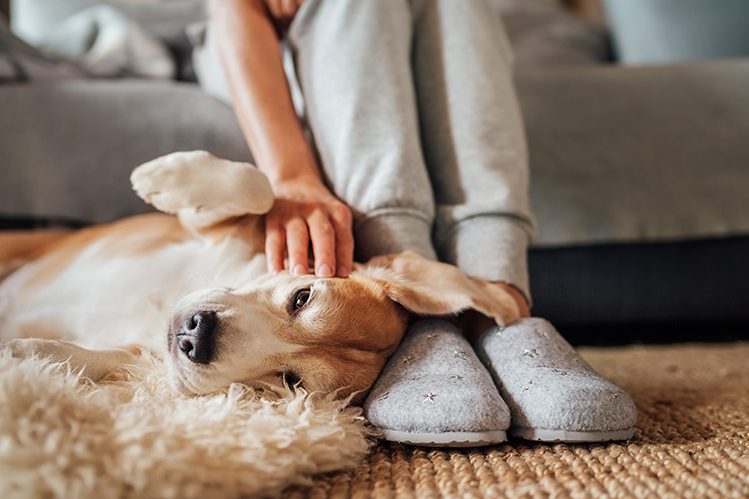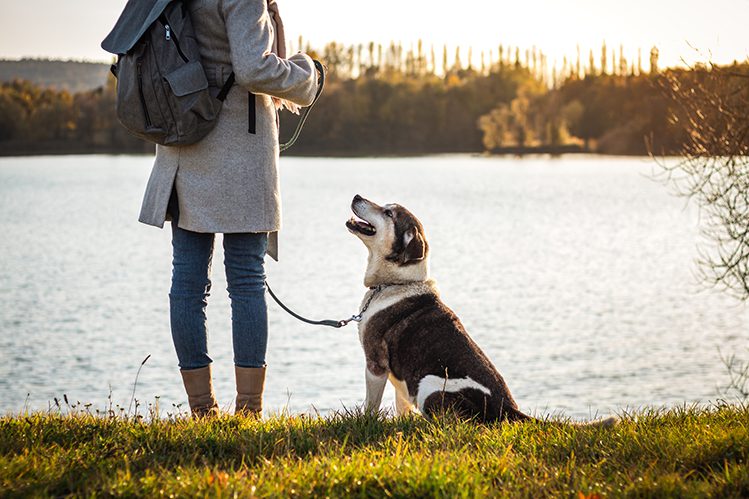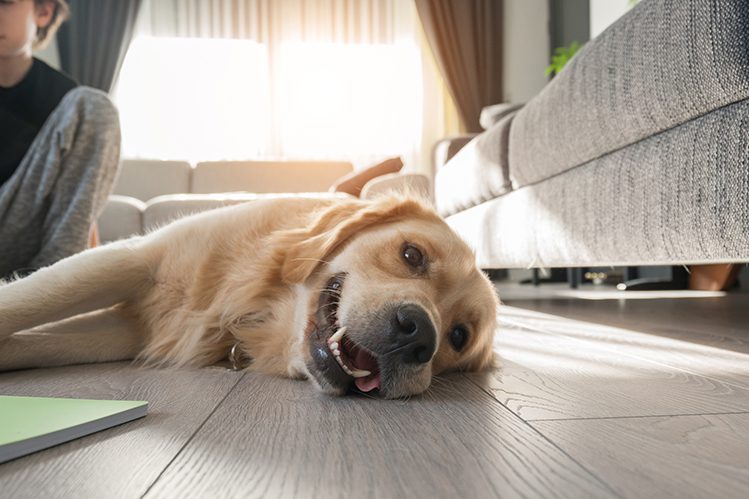
Adaptation of a dog from a shelter: what difficulties can you face?
The adaptation of a dog in a new family and in a new home is a process that requires time and patience on the part of the owners of the pet. In the case of a shelter dog, adaptation may take longer and be difficult due to the stress or abuse experienced by the pet. Let’s figure out how to help your new four-legged friend get used to the house and to you.
We have compiled recommendations that will allow you to establish contact with the dog and better understand your ward.
Getting rid of stress
Before your pet arrives at home, prepare a space for him. The dog should have a place where he can feel completely safe. It is better to place a bed for an adult pet in a secluded corner, and at first it is advisable to place a young puppy closer to you and only after some time gradually begin to increase the distance between you.
An unfamiliar situation will be stressful for the dog. It won’t take long for her to get used to the sounds and smells of her new home. Turn off the intercom sound, put the phones on silent mode, so that the newcomer hears as little sharp loud sounds as possible at first.
Your task in the first days after the appearance of a dog from a shelter in the house is to make it clear to the pet that he is in a safe place where no one will offend him, will not force him to do something that he does not like.
Introduce your dog to the new home gradually. Let her first have one small room at her disposal. It happens that a puppy, having immediately got into a huge apartment, sleeps little, because it is more interesting for him to run back and forth and explore five rooms and a corridor, rather than dozing on a couch. Such situations should not be allowed.
The dog needs to be at rest for 72 hours so that all the reactions caused by the change of residence subside in her body. In the first two or three days, the dog may refuse to walk, eat poorly, go to the toilet too often. This is fine. Do not force your dog to be active if you see that he still needs time to recover.
Don’t touch your dog unnecessarily. Do not disturb her when she is resting in her place. Remember that your place should serve as a guarantor of safety and peace for your pet. He, like you, should have his own space.
Hygiene procedures and trips to the veterinary clinic are also better to postpone for a while.
Find out as much as you can about your child’s past. This information will allow you to prevent many potentially stressful situations for your pet. Comfort in a new home is extremely important. The pet needs a friendly family, in which there is no place for scandals and screams.
Living in a shelter does not give the dog the same interesting experiences that it can get from the owner. Your task is to become a source of joy and happiness for your ward.
The key to friendship with a dog is to establish contact and constantly maintain a good dialogue with your ward from the moment you meet him. Your gestures, words, actions should not frighten the dog. Don’t let her doubt that you can be trusted.
The dog’s attitude towards you is the sum of all the impressions from your meetings and communications. The dog needs to be walked well, to encourage its good behavior with a treat. Both physical activity and emotional response from new owners are important to her.
For the first ten days, feed your pet the same way they were fed at the shelter. Then gradually transfer it to the diet recommended by the veterinarian.
The food should be pleasant for the pet and easy to digest, because stress has a noticeable effect on the digestive system. Watch the reaction of the pet’s body to food, it is very important to improve the functioning of the digestive tract.

The first two months of adapting a dog from a shelter to a new home are the most difficult. Zoopsychologists strongly recommend that owners take a vacation for at least the first two to three weeks of a new pet’s stay in the house. It is at this time that you need to make friends, get to know each other, and begin to work out the fears of the dog together. Remember that bringing a dog into your home is like having a 5-year-old child!
Experts note that there are three stages of adaptation of dogs in a new place. We have already talked about how the first three days pass for a pet after a complete change of scenery. The second stage of getting used to a new home takes from 10 to 14 days. But even at this time, you should not allow the newcomer excesses like jumping on a snow-white sofa and damaging his shoes. Rules should be established immediately. We gently stop pampering and ignore unwanted behavior. Gnaws shoes? Trade your shoes for a toy. So the pet will not have the feeling that you have taken something away and banned, besides, it is much safer to frolic with toys for dogs. Two months is enough for the dog to fully get used to the daily routine, feeding and walking schedule.
A dog that has already been abandoned once usually lacks communication, attention, and affection.
After appearing in the house, she may often demand signs of love, proof that you are always there. Try not to leave your dog alone for too long. If you are together for a week, and then you go to work all day, from the point of view of a pet, this will be a real tragedy. Start leaving the house for a short time, for five minutes, for half an hour, gradually increase this time. You’ve been out the door for 5 minutes. And, if the dog does not howl, does not bark, but is silent, when you return, be sure to praise it, reinforcing the reward with a treat. Gradually increase the time.
If the previous owners kept the dog on a starvation ration, he may begin to jealously guard his food from you. Try to step back, turn away, show with all your appearance that you will not interfere with enjoying the meal. Then you can start walking by, tossing a treat into the bowl. So the dog will understand that you will not only not take away food, but also offer something else tasty.
Often dogs from a shelter are unsociable, even communication with their relatives is difficult for them. You should not expect that your new ward will certainly make friends with all the dogs in the area. If the dog, having caught up with one of the relatives, can calmly communicate without entering into conflict, this will already be fine.
You can wean a dog from fear of relatives with the help of friendly walks, on which you and your pet and the owner of another dog with your ward line up. People should walk side by side, and dogs on leashes should walk on the outside of the line. So the pet will understand that being next to another dog does not bode trouble. And if anything, there are two people between them, so it’s not scary at all.

We teach new
For the first two months, you should not compulsively teach your pet commands. At this time, the main purpose of walking is to teach the dog to walk on a slack leash and interact with you. All ammunition for a pet undergoing an adaptation period should be as comfortable as possible. The less ammunition you put on your pet, the better. Show that you will not unnecessarily restrict his movements.
Consider moderate exercise for your dog. It is better to walk a little, but often, than to tire a four-legged friend with an unnecessary forced march through the entire area.
Be sure to take a treat with you for a walk, with which you will reward her for good behavior. And encourage the first time you need to constantly! She doesn’t bark, she doesn’t pull on the leash, she walks beside you, she just came up to you herself – for all the good things she does, you need a little encouragement. Your dog must understand that walking with you is not only interesting, but also tasty.
During the adaptation of the dog, focus on communication, maintaining contact, and not on training. You can teach your dog commands even in adulthood.
Among the shelter dogs there are those who have survived training using inhumane methods. They become untrained. However, they fully understand when to get up, sit down, and approach the owner. If you are worried that you will not be able to help your pet overcome the consequences of psychological trauma and stress on your own, contact an animal psychologist and tell the specialist as much as possible about your dog and the difficulties in communicating with him.
Be sure to leave a choice for the pet, if this is not contrary to safety rules. Want to take a walk? A good idea. Don’t like the toy? No problem, we will remove this toy, play with the one you like.

You should start training a new pet only when he has learned all the rules of life in the house and the daily routine. The dog knows when there will be breakfast and when it will be a walk. He behaves moderately emotionally, reacts with interest to new impressions.
Start any training with commands that your dog will definitely be able to follow. At the initial stage, it is extremely important to let your pet know that he can successfully learn new things, getting support and approval from you.
The period of adaptation of the dog in a new family should be treated with great attention. This is the time when you lay the foundation for mutual trust and friendship. If you learn to read the mood, the psychological state of your dog, it will be much easier to build a good relationship with your pet. The pet will certainly appreciate your care and become a true friend for many years.





